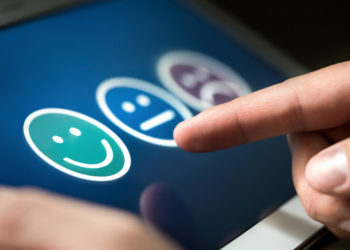
Molotov cocktails. Napalm. Nuclear bombs. Dirty bombs. Smallpox. All dangerous. All deadly in the wrong hands. All fairly widely understood in the scientific community, so much so that the control point around them isn’t related to information. It’s related to supplies. While it’s easy to get a rag, a broken bottle, some gasoline, and a match, it gets progressively harder to get napalm, plutonium, or Variola major.
Now, an interesting ethical dilemma is facing two journals as the US government — whose National Institutes of Health funded the research in question — is asking Nature and Science to not publish full genetic sequences involved in making the H5N1 bird flu virus transmissible by coughing or sneezing. It turns out bird flu only needs a few nudges to become aerosolized.
The original impetus behind the research was to find ways to develop drugs and vaccines against bird flu by understanding its mutation pathways. Unfortunately, researchers found it took just five mutations in two genes to create a strain of H5N1 that could get airborne and infect and potentially kill millions.
The National Science Advisory Board for Biosecurity, overseen by the NIH, has asked Science and Nature to keep certain details out of reports that they intend to publish on the research.
When I first read about this, the case of United States v. Progressive came to mind. Not by name, of course. That required a trip to the Google. But I remembered the general parameters from when I was a kid. There are some clear parallels.
In United States v. Progressive, the issue was publication of plans for a hydrogen bomb. The government sought prior restraint on the publication, and a Wisconsin federal district judge ruled in favor of the government’s interests based on compelling national security concerns. However, the case was ultimately made moot because the information was published outside the United States soon after.
Does the US government realize that Nature is not published by a US publisher? Their request certainly can carry a moral weight, but that may be where it ends.
Censorship often backfires, because once word about the censorship leaks out, there’s more interest in the work or topic than there might have been otherwise. That might be the case here, as reporters have turned their attention to the facts. For something the government wants to keep quiet, there are plenty of specifics in the news already, including this set of tantalizing tidbits:
The study was carried out by a Dutch team of scientists led by Ron Fouchier of the Erasmus Medical Centre in Rotterdam, where the mutated virus is stored under lock and key, but without armed guards, in a basement building.
In addition, since the best science can be replicated, there is this even clearer message that the genie may be out of the bottle:
A second, independent team of researchers led by Yoshihiro Kawaoka of the universities of Wisconsin and Tokyo is understood to have carried out similar work with similar results
Reading the coverage — the potential danger, the outlines of how to accomplish the change — there are at least three relevant questions:
- Is the news itself as dangerous as anything? Who knows how creeps think, but if their attention wasn’t focused on H5N1 before, it certainly will be now. And with that attention comes the potential for the information to be drawn out through back channels — bribes to the researchers or their assistants, theft, or things even more dire.
- Now that Wikileaks and similar hacker-based contingents have some computers to target, will those computers be able to withstand the attacks? Announcing where valuable data exists is an open invitation to some hackers. Assuming hackers get the genetic sequences, what then?
- Is the virus going to accomplish these mutations before long anyhow? If there are so few genes and steps involved, and billions of opportunities for genetic recombination on a daily basis, how long can it take before we face this naturally?
In any scenario, it seems wise to have a research and biomedical community in full command of the facts. Bruce Alberts, editor of Science, has stated that his journal may comply with the request if the NIH can create systems to provide the data to legitimate scientists around the world. There are problems with this approach. Even a virus as locked down and seemingly obliterated as smallpox has been more accessible than intended despite a similar system around its raw materials — in 2006, the Guardian successfully purchased part of the smallpox genome from one of the companies selling pathogen DNA. And legitimate scientists have broken rules for mere citations. Certainly, these data are a bit more potent than a better h-index.
Science is a form of crowd-sourcing. Which company, academic institution, scientist, or combination will come up with the vaccine or drug that will knock out H5N1+ can’t be predicted. But the science crowd needs the data. How many scientists will it take to crack this challenge to human health?
Pretending the data are safe now that their existence is known isn’t practical. The data will get out. If the information is in the hands of the good guys first, our chances seem better.
This is a thorny ethical issue, but not as thorny as many. There is precedent here with United States v. Progressive. One country or two journals exercising restraint won’t be enough. And in a communications environment much different than the one that existed in 1979, when United States v. Progressive was decided, keeping secrets whose existence has been broadcast and which reside on digital media is nearly impossible. One hack, one thumb drive, and they’re out.
Instead, the best approach seems to be to lock down the raw materials needed to turn that knowledge into power. That, at least, has a track record of working while allowing science to advance.
Discussion
5 Thoughts on "Dangerous Restraint — Is Censoring Science in Anyone's Best Interest?"
Suppose the “raw materials” needed to produce a deadly device whose science has been publicized are not at all difficult or expensive to obtain? Does this change the equation?
I can’t help thinking that there is some irony here for OA as it facilitates the unimpeded spread and acquisition of knowledge, whereas the TA system tends to keep this information more or less contained within the circle of professional science. Score one for TA over OA?
The first fertilizer bomb used by terrorists was in 1970 in Wisconsin. The terrorists learned how to make it from a Wisconsin Conservation Department booklet entitled “Pothole Blasting for Wildlife.” Larger fertilizer bombs come more immediately to mind, like that used in Oklahoma City to devastating effect.
As “The Daily Show” parodied last week, Lowe’s (which withdrew ads from “American Muslim” because of trumped up controversy) is a great place for terrorists to shop.
I believe the term you’re discussing here is “Streisand Effect”
Streisand Effect refers to the unintended consequence of further publicizing information by trying to have it censored.
One has to wonder though, if this is something of a test balloon, a first attempt to see how the science community (and general public) will react to calls for this type of censorship. Will future requests be widely publicized like this? Is censorship already quietly happening under the radar?
It is a difficult question. As the former editor of a biology methods journal and editor on countless laboratory manuals, I can’t say the subject ever came up. Likely those now in my former positions are going to have to consider these things in the future. While it’s easy to suggest that keeping access to materials difficult will solve any issues, problems arise when dangerous results can be achieved by using commonly available reagents. Will one need a license to purchase agar?
I can’t resist commenting on how coincidentally personal this post and the subsequent comments were to me.
I was personally very involved in the Progressive case. I was responsible for the typesetting of the Progressive back then, through the company I worked for. Erwin Knoll and Sam Day, the editors, called me over to their office, shut the door, informed me about their intentions as that article was being developed, and explained the need for absolute secrecy. As it happens, I had originally intended to be a physics major, and I actually understood the content of the article (as many others like me would do). I personally handled all of the manuscripts, artwork, proofs, and “repro” for that article, keeping them at home and in my personal possession at all times — no other employees or other people had access to them until the magazine was printed (which it was). I still have them. One interesting (and revealing) footnote is that I was never contacted by the FBI. If they had actually wanted to suppress the information, one would think they would have come after me and forced me to turn over those manuscripts and illustrations and proofs. Erwin and Sam took the government’s failure to do so as proof that the politics were more the issue than the information. This confirmed their point that there was no “secret”: the author had obtained all the information from public sources in the first place. That was one of the points of the article: “The H-Bomb Secret” was not a secret. The government just didn’t want folks to _know_ it wasn’t a secret. The Progressive was being responsible in calling attention to the vulnerability of that information. Maintaining the illusion that it was secret enabled the preservation of the illusion that only the US government knew how to make an H-bomb.
And another footnote: I was one of the first people on the scene of the Army Math bombing in Madison in 1970. I lived about three blocks away from Sterling Hall. It blew in the windows of my apartment and threw the window shade, broken glass, and the stuff on my desk across the room. I arrived on the scene just as the fire trucks were getting there.
Just call me Forrest Gump. . . .



